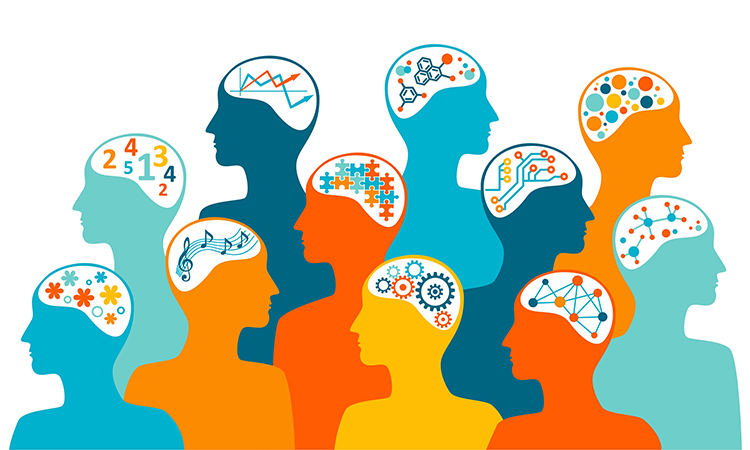We need to think differently about transport
- Like
- Digg
- Del
- Tumblr
- VKontakte
- Buffer
- Love This
- Odnoklassniki
- Meneame
- Blogger
- Amazon
- Yahoo Mail
- Gmail
- AOL
- Newsvine
- HackerNews
- Evernote
- MySpace
- Mail.ru
- Viadeo
- Line
- Comments
- Yummly
- SMS
- Viber
- Telegram
- Subscribe
- Skype
- Facebook Messenger
- Kakao
- LiveJournal
- Yammer
- Edgar
- Fintel
- Mix
- Instapaper
- Copy Link
Posted: 4 April 2023 | Peter Griffiths - BABLE | No comments yet
Peter Griffiths, Global Urban Futurist at BABLE, discusses the immense potential that neurodiverse people have to thrive within the transport sector and explains why it is necessary for companies to focus more on creating urban environments, transport infrastructure and places of work that are accommodating to all types of needs in order to define more liveable futures for everyone.


In many ways, transport infrastructure is a kind of neural network tying a city together. London’s new Elizabeth line is like a giant wire that connects links that didn’t exist before – perhaps they were just too awkward, too invisible or simply too time consuming. The result isn’t just ballooning property prices along the new route, but also a 10% increase in Central London rail capacity and significantly better accessibility for millions of people.
In cities around the world, the quality of local, regional and international transport links is key to humans flourishing, allowing people to connect to opportunities and adding value to those around them. The greater the movement potential, the more capacity there is for sharing ideas.
Now, imagine for a moment that cities are full of people who are wired to think differently, too. In fact, about one in every seventh person in the UK is neurodiverse, which includes people with attention deficit hyperactivity disorder (ADHD), autism or dyslexia. These are people whose brain wiring means that they process information differently. Like London after the Elizabeth Line, this neurotribe can sometimes connect dots that other people struggle to, creating new opportunities to make the whole system work better.
With Office for National Statistics data showing that four in five autistic adults are unemployed… hundreds of millions of people are missing out on opportunities to contribute and be part of defining more liveable futures for everyone”
Let’s take this thought exercise one step further. What would happen if London simply turned off the Elizabeth Line? There’d a be a significant drop in the number of people that are able to access work opportunities, and the other lines would likely be overworked. Now, apply this same thought to neurodiverse people in urban environments, transport infrastructure and places of work that aren’t accommodating to their needs – perhaps a million people would be unable to fully contribute to helping a city like London thrive. Then, multiply that across the UK and the rest of the world. This seems to be the reality, with Office for National Statistics (ONS) data showing that four in five autistic adults are unemployed, meaning that hundreds of millions of people are missing out on opportunities to contribute and be part of defining more liveable futures for everyone.
Dell created an autism hiring programme to access talent and found that retention rates improved, innovation expanded and, overall, problem-solving rates improved. This is particularly important for a company that prizes innovation. In addition, JPMorgan Chase found that its Autism at Work initiative had twice the productivity of neurotypical teams, while neurodiverse tech testing teams regularly spotted and corrected problems 30% quicker. The Elizabeth line, in these cases, was simply a different hiring and management process that better matched strengths to problems.
Applying the neurodiverse experience to transport
So, where does neurodiversity come into the future of mobility? There are three levels to answering this question. The first is that neurodiverse individuals are potential customers. Taking a broader data point as an illustration – the West Midlands is estimated to lose £4 million in potential revenue monthly because disabled people take fewer trips. The second is the growing recognition that organisations need to represent the diverse communities that they serve. Neurodiverse people need public transport just as much as neurotypical people do; inclusion from design to operation is key to positively meeting and understanding their needs. This is slowly happening, although important diversity conversations frequently don’t include neurodiversity, with many organisations only on the journey to fully embracing equity, diversity and inclusion (DEI). The third, however, is the least explored – neurodiversity can help to drive innovation.
Neurodivergent people may be able to see alternative possibilities for how to use existing infrastructure and have additional insights into the impact of introducing new technologies into live urban systems”
Transport infrastructure is a networked or patterned problem that tends to be solved in iterative rather than radical ways. There is some sense to this given legacy infrastructure, legacy skills and legacy management. Moving from analogue to digital signalling, for example, comes with a challenging transition period where duplication is needed to limit downtime and the risk that new approaches may not work as expected. Neurodivergent people may be able to see alternative possibilities for how to use existing infrastructure and have additional insights into the impact of introducing new technologies into live urban systems. The adage ‘thinking outside of the box’ is potentially easier for a brain that isn’t wired to prioritise contextual information.


Are company DEI strategies really inclusive of all?
Many companies have begun to think about diversity, equity and inclusion programmes to expand access to talent, but few include a focus on neurodiverse hires. What is perhaps surprising is that few mobility start-ups, which are premised on the idea of changing how we think about mobility, actively target neurodiversity within their scope for attracting diverse talent, although it sometimes gets attention around customer acquisition.
A more inclusive approach encourages providers to think more critically about the impact of their user experience, and to consider that the value that transport provides might be significantly greater than linking A to B”
While some of Micro-Mobility for Europe’s operators – which includes Bird, Bolt, Dott, Hopp, Lime, Superpedestrian, TIER Mobility and Voi Technology – talk about inclusion as part of the hiring process, none mention that they are enabling places for neurodiverse employees. Lime does have an Employee Resource Group that may include neurodiversity, but this isn’t explicit. Uber, as perhaps the most visible of the global shared mobility brands, doesn’t mention neurodiversity in its most recent People and Culture Report. This shows that the role that neurodiversity can play in helping these disrupters to scale their ambitions is a significant blind spot.
Public transport providers have also found it difficult to make this transition to more enabling environments, with many mostly focusing on the impact on customer journeys. This approach is helping to improve journeys for neurotypical travellers, too. Just think of quiet coaches, clear wayfinding, real-time tracking and simplified ticketing, for example, which help to communicate that public transport is safe to one audience and convenient to another. A more inclusive approach encourages providers to think more critically about the impact of their user experience, and to consider that the value that transport provides might be significantly greater than linking A to B. In a context where revenue is constrained and viability is under scrutiny, this could be an opportunity to re-invent or broaden revenue streams and the purpose of urban transport systems.
Neurodiverse people can be more than just customers
The future of mobility will be accelerated when operators and disruptors move from thinking about consumers and social inclusion to recognising how enabling work environments can unlock innovation”
A few years ago, the National Union of Rail, Maritime and Transport Workers (RMT) had voiced frustration at Transport for London’s (TfL) unwillingness to introduce an employment policy on neurodiversity. TfL is investing in specifically reducing recruitment barriers for neurodiverse hires and has a work placement programme to help. However, imagine what a positive message one of Europe’s most important public transport operators could send if it also targeted neurodiverse individuals to help with solving Vision Zero, carbon reduction, air quality, customer experience and operational efficiency? That would communicate that public transport isn’t only there to help people with neurodiversity, but can also be helped by those who think differently.
The future of mobility will be accelerated when operators and disruptors move from thinking about consumers and social inclusion to recognising how enabling work environments can unlock innovation. Ultimately, it is likely to be more efficient to enable those who already think differently than to invest heavily in systems change. There is, however, some systems change that needs to happen. The ability of neurodiverse people to thrive is often constrained by a world that isn’t designed to make the most of the strengths of people who think differently.
Peter Griffiths helps people to see and imagine cities differently. In December 2022, he joined BABLE’s Smart Cities team to help more places to transition to net zero and increase productivity. As an urban thought leader and city strategist, he most recently explored how the shared micro-mobility sector can transition from start-up to critical infrastructure at TIER Mobility. Before this, Peter worked for the London School of Economics and Political Science on the future of cities, supported the World Bank’s Global Platform for Sustainable Cities and consulted to cities across the UK and Europe on maximising investment and brand opportunities.
Related topics
Passenger Experience, Public Transport, Workforce Inclusivity, Workplace
Related countries
United Kingdom
Related organisations
BABLE, Bird, Bolt, Dell, Dott, Hopp, JPMorgan Chase, Lime, Micromobility for Europe (MMfE), Office for National Statistics (ONS), RMT, Superpedestrian, TIER Mobility, Transport for London (TfL), Uber, Voi Technology
Related people
Peter Griffiths








